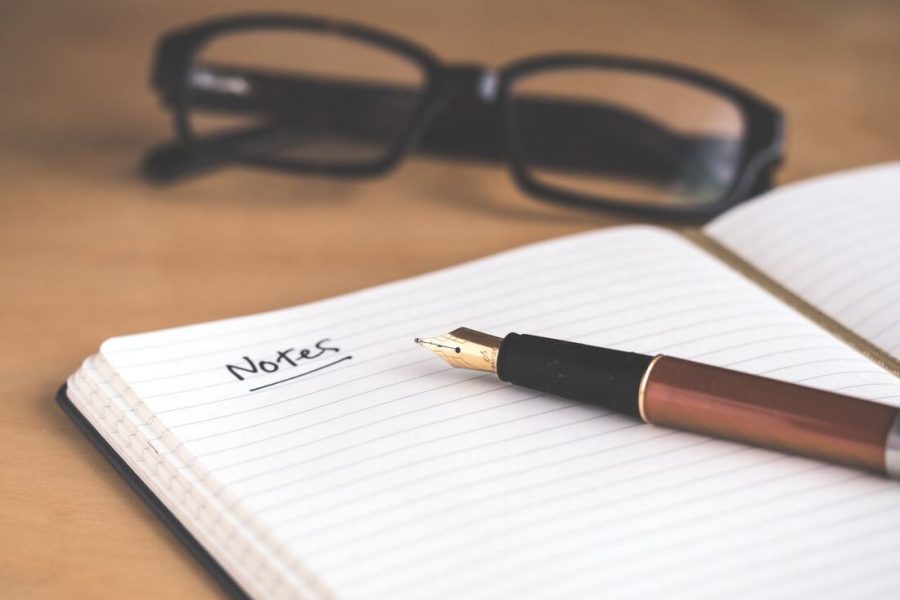Top 6 Tips for Better Notes
Imagine this setting: The classroom is quiet as the professor approaches the whiteboard, writing a few bullet points in barely legible penmanship.
A student waits in the background for a clear view, preparing themself for notes: writing utensils of choice already placed in-hand and notebooks opened to the next clean page.
They scrawl their name, then the date, then the class and professor information on the top right hand corner, the easiest things to write first.
The professor begins their lecture, sometimes adding to the board of notes, sometimes just using wild gestures and pacing back and forth for the entire duration of class.
Although valuable information is being exchanged, the words do not transfer to the paper on their own.
The student’s college-ruled page remains unblemished, and class is now almost halfway over.
If this scenario sounds at all familiar, you are not alone.
Note-taking is not only a necessary skill, but one that takes time and dedication to develop.
The purpose of taking good notes is to stay engaged with the class and retain information to possibly study from later. A good page of notes should reflect the depth of information provided.
Here are some of the best advised tactics for better quality notetaking.
Don’t Write Everything
As surprising as it is, writing everything does not actually benefit you. Instead, create your own code of abbreviations and only use key words for verbal notes.
For written notes, simplify lecture notes by eliminating extra words that don’t help explain a point. Use symbols that can replace words, such as “&” for “and” or the plus sign.
Use Color
Color is a good tool to improve memory and association. It makes important information stand out at a glance and helps organize what type of facts you’re recording.
Dates, names, locations or vocabulary can potentially have their own color pen or highlighter.
Don’t be Afraid to DRAW
No, we are not all artists, but we did learn our basic shapes in kindergarten. Those geometric and free-form shapes are perfect for grouping lists or a bulk of information related to the same things.
Use different types of lines and arrows to connect concepts or timelines. Draw diagrams and graphs to show hierarchy or chronology.
Use Spacing Wisely
Just like college essays that suggest double spacing and one inch margins all around, the extra space between your work and a red pen can make a difference of good feedback from your professor and more room for additions as the lecture continues.
Write NEATLY
One of the biggest mistakes of taking notes is NOT being able to read them when you need them. To avoid this dilemma, write carefully and calmly, forming each letter individually.
This step will not only make you have to repeat the words as you’re writing them, but doubles the likelihood that you remember what you are writing.
Keep it Simple
Finally, one may be the loneliest number, but ONE is powerful when it is all you need to study from.
Remember, only the most important information should be written down. Everything else is conceptual and connections can be made while you study.
Notes are simply a reference.
With these tips in your back pocket, it is a matter of patience and desire to take these into consideration and make the needed improvements in your own notebook.

K’Na Rose is a 24 year-old student at Delta State University. She is from Tampa, Flor., but moved to the Mississippi Delta roughly three years ago. She...



